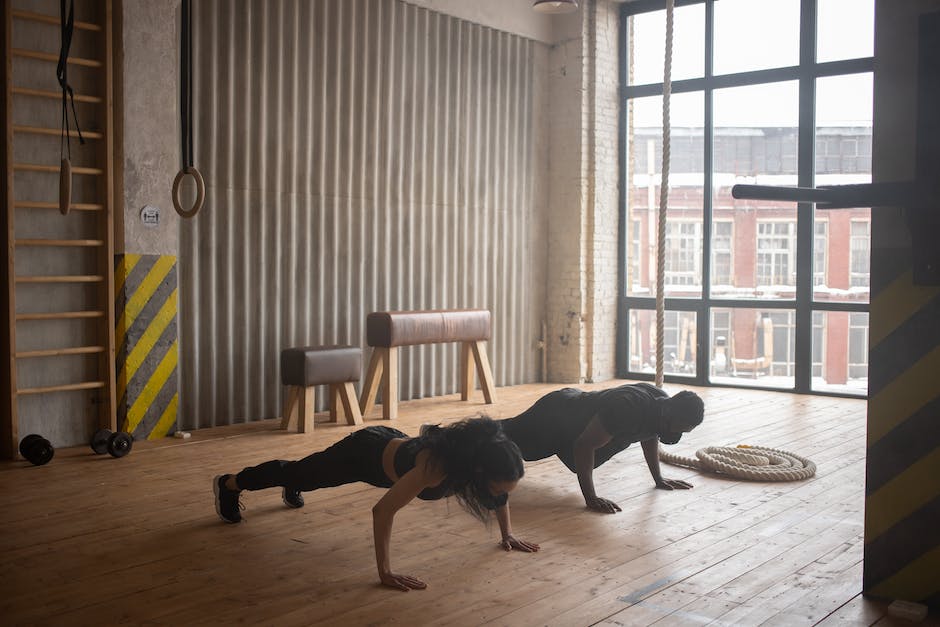Embracing a healthy, active lifestyle calls for incorporating varied exercises into our daily routines, with planking taking a center stage in full-body workouts. Known for its potent core-strengthening abilities, this isometric exercise impacts a plethora of muscles beyond the abdominal region. In this discourse, we delve into the biomechanics of planking, outline the core and supporting muscles it engages, and scrutinize the role it plays in promoting muscular endurance. As we journey through the intricacies, we unmask the transformation this humble exercise can ignite, from improved postural stability to enhanced body functionality.
Understanding the Planking Exercise
Delving into the Biomechanics of the Planking Exercise
A comprehension of biomechanics – the science that combines the laws of physics with biological systems – leads us on a fascinating journey of understanding our daily physical activities, including workouts and exercises. One such exercise, often found in most fitness regimes globally, is the plank. The plank exercise, while seemingly simple, is a complex synchronization of multiple body systems activating simultaneously while remaining almost static, which demands a biomechanical analysis steeped in scientific rigor.
The plank exercise, in its fundamental form, is an isometric strengthening exercise that promotes stability and fortitude. It activates the axial skeleton, which comprises the skull, spinal column, sternum and the rib cage, all of which need to maintain a straight alignment while performing planks. The posture and sustained positioning in a plank help strengthen the core muscles, primarily including the rectus abdominis, transverse abdominis, internal and external obliques, and the multifidus.
Much of the biomechanical magic nested within the plank exercise revolves around the concept of isometric contraction. Unlike isotonic contractions, where muscles change length during contraction and cause joint movement, isometric contractions involve the muscles remaining at a constant length. This coaction of constant length and muscle tension generation characterizes the core engagement in a plank. Thus, balance, coordination, and neuromuscular efficiency are all aptly honed.
Further analysis illustrates that the plank requires and nurtures a rich interplay of static and dynamic stabilizing systems. Our muscles, ligaments, and tendons work synchronously to maintain stability-, with even the minutest twitch having potential ramifications on overall balance and alignment. The central nervous system plays the symphony conductor to this finely-tuned orchestra through proprioceptors that enable sensory feedback depicting body position in space.
Interestingly, biomechanics bifurcates into kinematics – the motion study without considering forces, and kinetics – involving forces causing motion. From a kinematics perspective, the body in a plank remains relatively still, reiterating the isometric nature of the exercise. However, kinetic interpretation reveals that national forces, including the body’s weight and gravity, and the normal force exerted by the ground, keep the body suspended in air—nature’s quintessential balancing act.
Thus, as one plunges deeper into the biomechanical depths of planking, it swiftly becomes evident that this exercise is layers beyond a simple tool for abdominal toning. It is an integral system workout and physiologic event loaded with benefits, underpinned by complex biomechanics. Undoubtedly, the broader scientific lens that biomechanics offers will continue to help us establish connections, enrich our knowledge, and encourage comprehensive conversations on exercises such as planking.

Core Muscle Engagement during Planks
Harnessing the brilliance of biomechanics, the plank exercise profoundly fortifies several muscles encompassing our body’s robust core. A critical enigma to unravel here is the determinant role each of these muscles plays, their coordinated functionality, and the exceptional benefits of maintaining a solid core.
Core muscles’ dynamism is discerned by the contribution of various muscle groups, which, when in harmony, amass the strength of a sturdy core. In planking, muscles like the rectus abdominis, transverse abdominis, external and internal obliques, and erector spinae are the primary protagonists of the core. Comprehensively, they endow stability, control, and balance to the entire body, unified by the central nervous system’s masterful orchestration.
The rectus abdominis, also known as the ‘six-pack’ muscle, serves the key functions of sustaining posture, enabling lumbar flexion and supporting the internal organs. However, it’s the transverse abdominis—the deepest layer of abdominal muscles— that truly shines. With its distinctive horizontal orientation, it tightens like a corset around the abdomen, optimizing intra-abdominal pressure and spinal stability.
Working alongside these muscles are the obliques. The external obliques are responsible for rotation and lateral flexion of the trunk, whilst the internal obliques, synergistically with the external obliques, aid rotation. Their synchronized function immeasurably augments core stability during planks.
Traveling upwards along the spinal column, the erector spinae muscles—a group of three paired muscles— also deserve recognition. They perform the essential function of straightening and rotating the back, a vital aspect of maintaining the correct posture during planking.
It must be asserted that planking doesn’t solely stimulate the core but, in fact, reaches further to engage secondary muscles like deltoids, trapezius, rhomboids, pectoralis major, and even the gluteus maximus, further accentuating the value of this exercise soundly grounded in biomechanics.
The peculiarity of the plank lies in how it spurs isometric contraction, implying that there is no movement at the joint, and the muscle length remains constant. As a result, an intense amount of muscle tension is developed without any visible motion, enhancing muscular endurance and core stability— indispensable characteristics of a well-conditioned physical constitution.
Above all, the comprehensive stimulus rendered to the core by the plank exercise intensifies proprioception—the body’s innate sense of spatial awareness and balance— and refines motor skills. This, in turn, substantially reduces the susceptibility to injuries, elevates athletic performance, and supports effortless execution of daily physical activities.
Planks distinctly illustrate the rigorous engagement and strength amplification of our core muscles, thus underlining its considerable utility in the ambit of fitness and beyond. The planks, therefore, do not merely represent a simplistic exercise routine; they intimately intertwine the disciplines of biomechanics, kinesiology, and neurology— an exquisite intersection of demanding physical training with engaging scientific exploration.

The Role of Supporting Muscles in Planking
Muscular interplay in planking is indeed a delicate symphony, but it goes beyond the typical “core” as defined by the rectus abdominis, transverse abdominis, external obliques, internal obliques, and erector spinae.
To fully comprehend the intricacies of this exercise, one must delve into the secondary, or “hidden”, muscles that are activated during a plank and their consequential roles.
The serratus anterior, a muscle situated on the side of the chest, plays a pivotal role in maintaining the rounded shape of the thoracic cavity while planking.
By firmly attaching the scapula to the rib cage, it develops upper body stability essential for the balance and position desired in a plank.
At the lower part of the body, the quadriceps and gluteal muscles contribute significantly.
While primarily known for their function in locomotion, they provide essential stability and alignment in the plank position.
These muscles, particularly the gluteus maximus, generate a posterior pull that counters the anterior pull of the abdominal muscles, contributing to a balanced, neutral spine.
Understanding these muscular interactions during a plank exercise underscores the role of synergist and antagonist muscles in isometric exercises.
Synergists assist in the desired movement while antagonists provide necessary resistance.
Simultaneously, the stabilizer muscles, like the deltoids and trapezius in the upper body, or the adductors and hamstrings in the lower body, maintain the stability necessary during a plank.
Furthermore, the activation of these secondary muscles enhances proprioception – the awareness of one’s body in space.
Engaging a variety of muscular groups during a plank not only fosters strength but also refines motor skills and balance.
In turn, this body awareness aids in reducing injuries and improving athletic performance.
Planking then unfolds as an elaborate matrix of muscle activation and balance, illuminating the interconnectivity of human movement.
It is more than a workout – it serves as a testament to the human body’s ability to synergize different muscle groups at once for stability and control.
Certainly, much remains to be understood in this intricate and invisible ballet of muscular engagement.
Yet, the progression of research into these secondary muscles, their activation, and roles in planking, holds promise for a more holistic understanding of the exercise.
Thus, the plank position, from this perspective, becomes a compelling intersection of fitness and scientific exploration.

Planks and Muscular Endurance
Delving deeper into the plank’s intricacies, the value of the serratus anterior muscle deserves consideration. Acting as a one-man orchestra conductor, the serratus anterior controls the scapula’s movements tied directly to our thoracic cavity’s shape during planking. When functioning correctly, this muscle ensures that the rhythmic rise and fall align with our physiological needs. Hence, mastering this muscle’s control can amplify the benefits of regular planking by improving endurance.
Equally essential to the plank are the quadriceps and gluteal muscles. Known for their strength and size, these muscular powerhouses contribute to maintaining stability and alignment in the plank position. While their contribution in a bursting sprint or powerful squat jump may be clear, their role in an isometric exercise like the plank is just as crucial. As they continually contract, they create a solid base, maintaining a balance that works to bolster endurance over extended periods.
Interestingly, planking activates not only primary muscles but also synergist and antagonist muscles, further promoting endurance. Synergist muscles support the primary muscles involved in planking, decreasing the strain and allowing these muscles to function more efficiently. Antagonist muscles, on the other hand, offer a counterforce- a boon to maintain the necessary balance during this exercise.
Moreover, stabilizer muscles activate to help maintain a fixed body position for an extended period. The body’s requirement for stability during a plank addresses these often-underutilized muscles, ultimately fostering muscular endurance and full-body strength.
The unalloyed brilliance of planking also lies in the enhancement of proprioception through secondary muscle activation. Proprioception- the ability to sense the body’s position without visual cues- gets finely honed as it works with secondary muscles during a plank. This improvement translates to better coordination and balance, invaluable advantages in any physical activity.
Interconnectivity of muscular groups in planking and its implications for human movement is a growing field of fascination. This exercise, often dismissed as rudimentary, brings into synchronization various muscular groups. The rectus abdominis working in harmony with the transversus abdominis to create and maintain a solid core during plank exhibits exquisite biological architecture.
The magnitude of research regarding secondary muscles, their activation, and roles in planking is burgeoning. The quiescent potential for improving muscle endurance residing in these often overlooked muscle groups is an area of great scientific interest.
In conclusion, the science behind the plank position adds another dimension to its significance. It’s not merely a physical endurance task, but a rich, complex maze of anatomical functionality and capability. The ongoing discoveries continue to enlighten our understanding of human kinetics, emphasizing planking’s beneficial role in improving muscular endurance, a testament to the wonder of science encapsulated in human physiology.

Through unpacking the multi-faceted dynamics of the planking exercise, it is clear that its benefits extend beyond a well-toned abdomen. By activating a comprehensive array of core muscles and involving numerous secondary muscles, planking offers a remarkably efficient way to enhance body balance, stability, and overall functionality. Additionally, its key role in promoting muscle endurance further amplifies the holistic value of this exercise in our fitness journeys. The ultimate take-away, therefore, is that integrating this seemingly simple but exceptionally influential exercise can propel us towards achieving optimal fitness levels.
